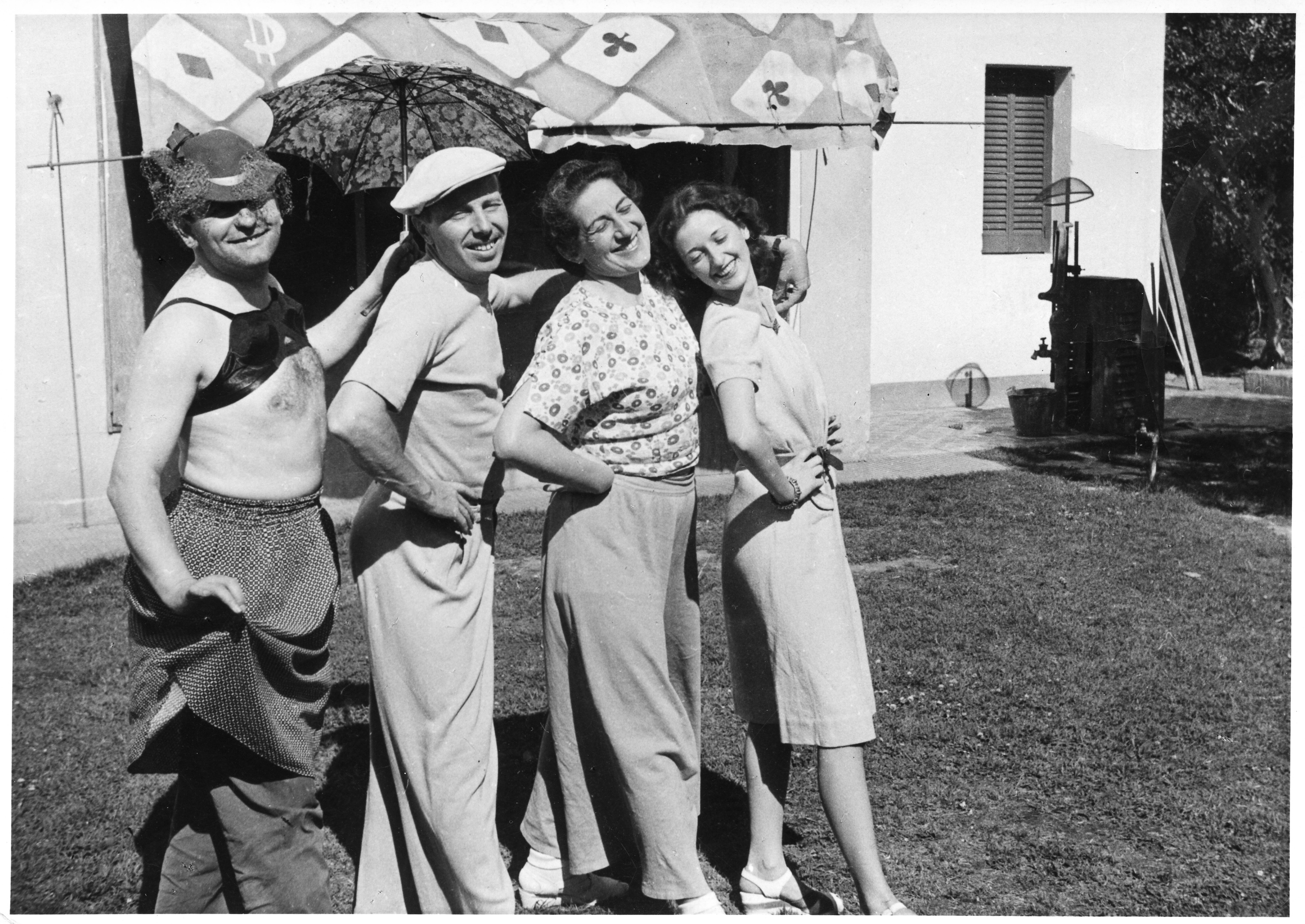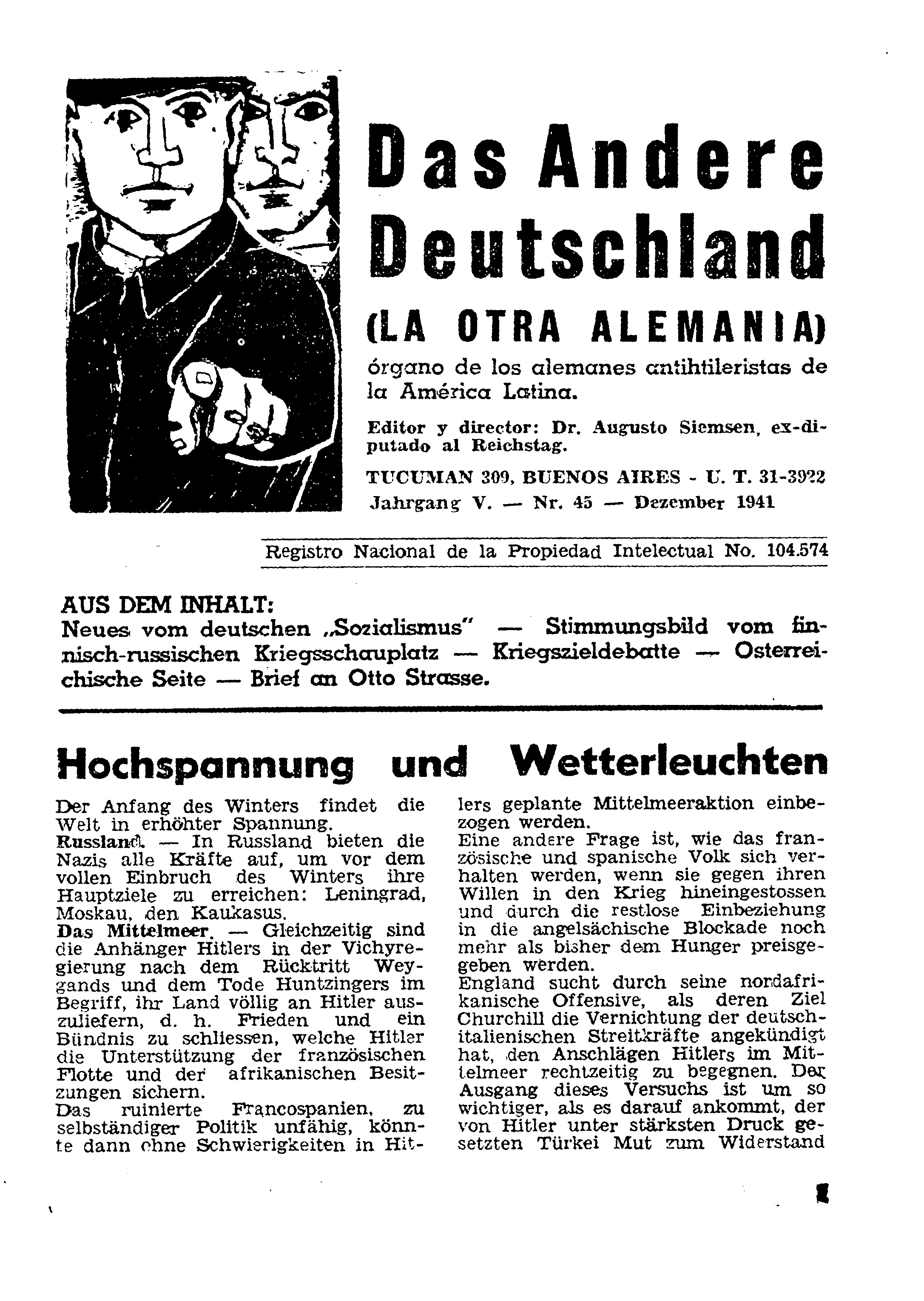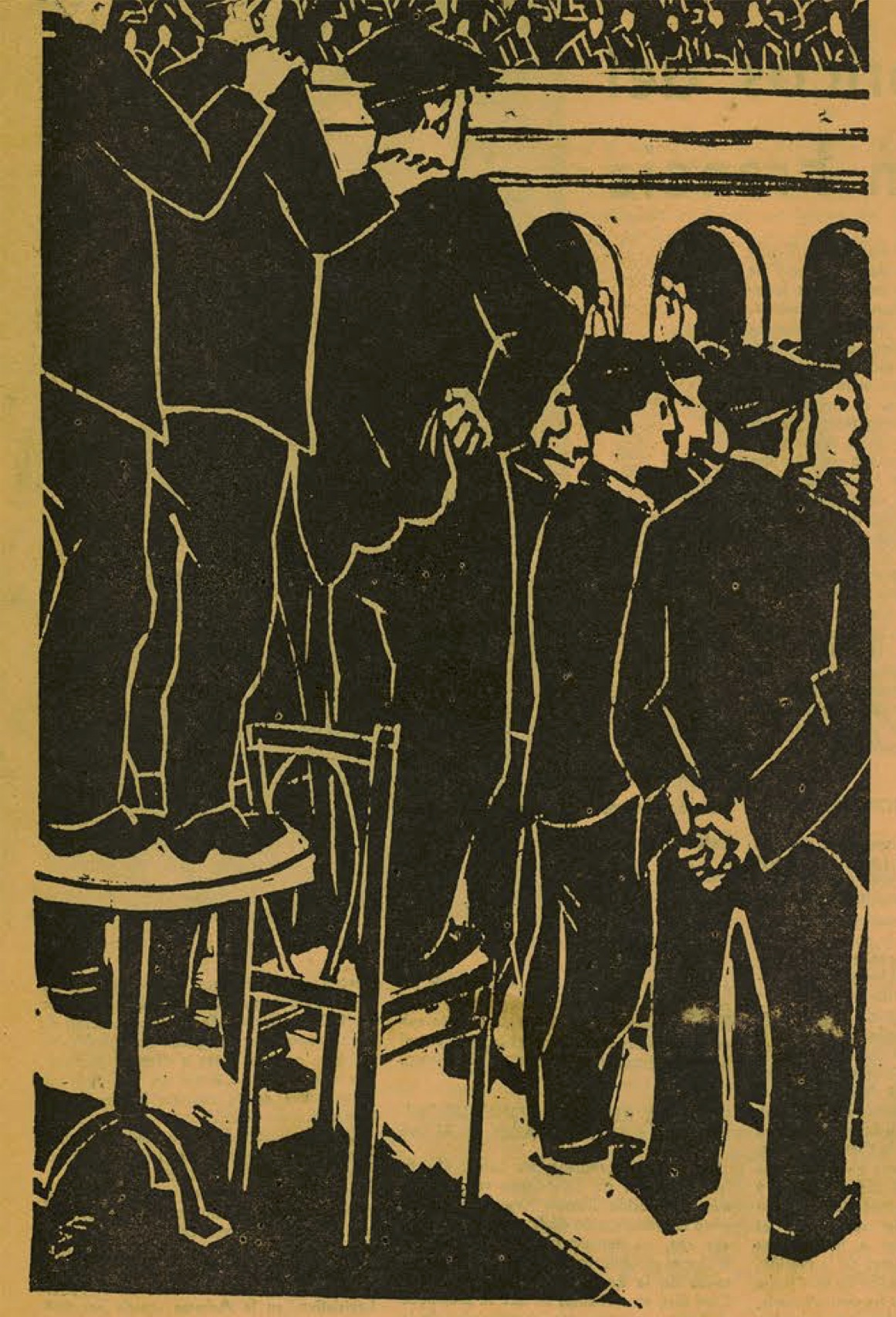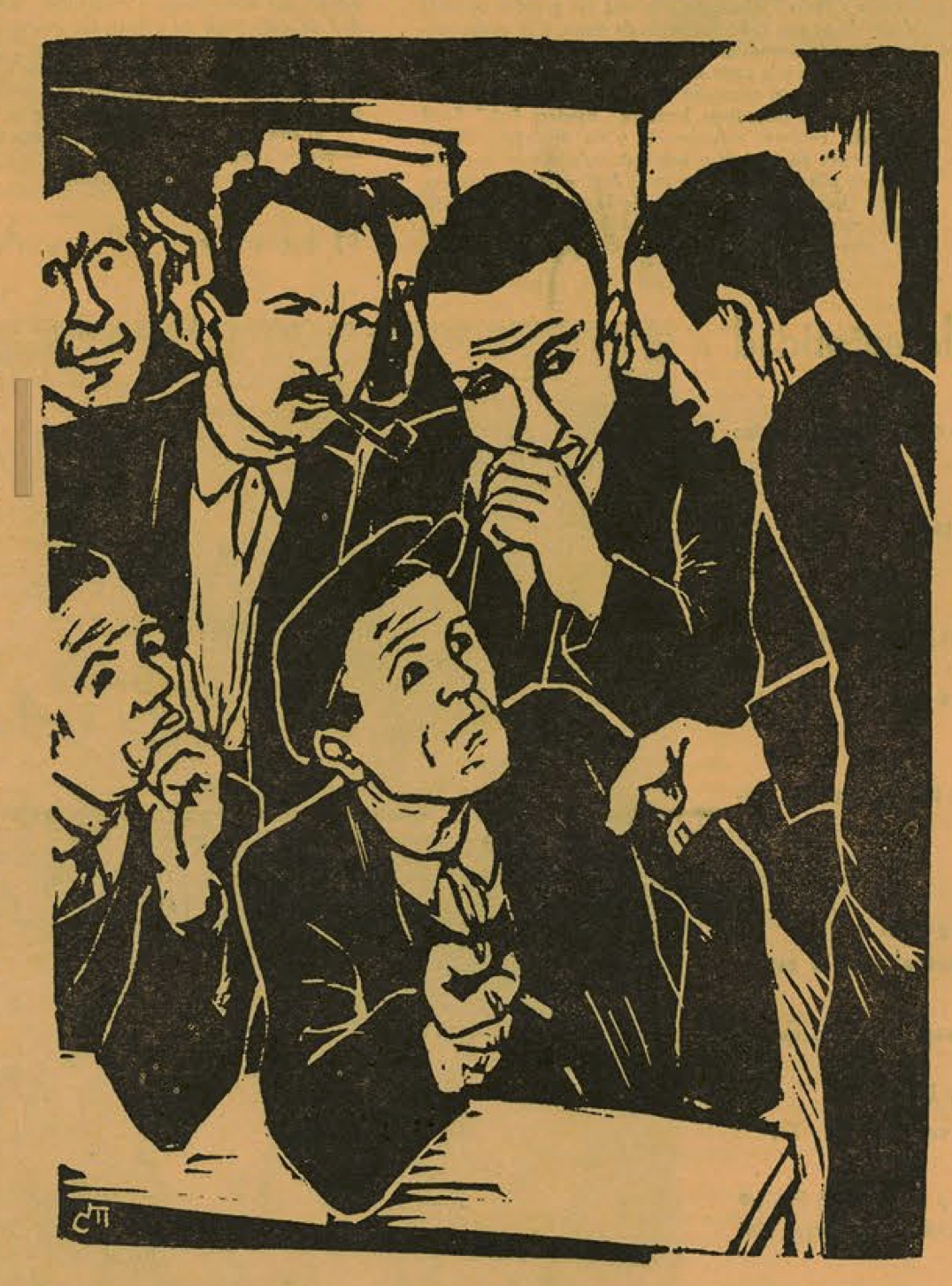Archive
Clément Moreau
- Clément
- Moreau
Carl Meffert
- 26-03-1903
- Koblentz (DE)
- 27-12-1988
- Sirnach (CH)
- Graphic Artist
German-born Clément Moreau had to exile to Buenos Aires due to his political activism. There, he was well integrated into the artistic milieu and published his caricatures in many publications.
Word Count: 31

Photo of Clément Moreau, “Truppe 38” in Argentina, 1938 (© Schweizerisches Sozialarchiv). 
Clément Moreau, Logo in Das Andere Deutschland, no. 45, December 1941. 
Clément Moreau, engraving printed in Lamarque, Nydia. "Mitin de Frente Unico en París." Unidad por la Defensa de la Cultura, no. 1, January 1936. 
Clément Moreau, engraving printed in Lamarque, Nydia. "Mitin de Frente Unico en París." Unidad por la Defensa de la Cultura, no. 1, January 1936. 
Photo of Clément Moreau, “Truppe 38” in Ramos Mejía, Argentina, 1939 (© Schweizerisches Sozialarchiv). Engelbert, Beate L., editor. Clément Moreau: con el lápiz contra el fascismo. Goethe-Institut, 1994.
Word Count: 15
Schweizerisches Sozialarchiv, Zürich
Stiftung Clément Moreau, Zürich.
Word Count: 9
Berlin, Germany (1926–1933); Zurich, Switzerland (1933–1935); Buenos Aires, Argentina (1935); Zurich, Switzerland
Escuela Cangallo, Pres. Tte. Gral. Juan Domingo Perón 2169, Buenos Aires (place of work); Colegio Pestalozzi, Cap. Gral. Ramón Freire 1882, Buenos Aires (place of work).
- Buenos Aires
- Laura Karp Lugo. "Clément Moreau." METROMOD Archive, 2021, https://archive.metromod.net/viewer.p/69/2950/object/5138-7556038, last modified: 27-09-2021.
-
Gyula KosiceSculptorPoetBuenos Aires
Born in Kosice (Slovakia), the four-year-old future artist Gyula Kosice reached Buenos Aires by ship in 1928. He forged ties of friendship with Grete Stern, Horacio Coppola and other artists.
Word Count: 29
Gertrudis ChalePainterBuenos AiresGertrudis Chale was an Austrian painter based in Buenos Aires, where she achieved integration into the local art scene and spent years travelling throughout the region.
Word Count: 26
Grete SternPhotographerBuenos AiresGrete Stern is one of the photographers that represent modern photography in Argentina. Her house in Ramos Mejía was a meeting place for local and foreign artists and intellectuals.
Word Count: 30
Luis SeoanePainterMuralistIllustratorLawyerBuenos AiresLuis Seoane is an artist mainly known for his murals, paintings and illustrations. He spent his childhood and youth in Galicia, before settling in Buenos Aires in 1936.
Word Count: 27
UnidadMagazineBuenos AiresFrom 1936, the anti-fascist movement in Argentina found one of its most consistent opinion platforms in the magazine Unidad, organ of the Association of Intellectuals, Artists, Journalists and Writers (AIAPE).
Word Count: 29
Das Andere DeutschlandAssociationBuenos AiresDas Andere Deutschland was founded by German exiles. Opposed to the Nazi regime, it sought to represent ‘the other’ Germany, a tolerant, peaceful and humanist one.
Word Count: 26
Agrupación de Intelectuales, Artistas, Periodistas y Escritores (AIAPE)AssociationBuenos AiresThe Agrupación de Intelectuales, Artistas, Periodistas y Escritores – AIAPE (Association of Intellectuals, Artists, Journalists and Writers) was a main association that helped migrants integrate into Buenos Aires’ cultural life.
Word Count: 30
Truppe 38TheatreBuenos AiresGerman exile networks were very strong in Buenos Aires. From this community, Clément Moreau, a German caricaturist and anti-fascist militant, created the theatre group Truppe 38.
Word Count: 26